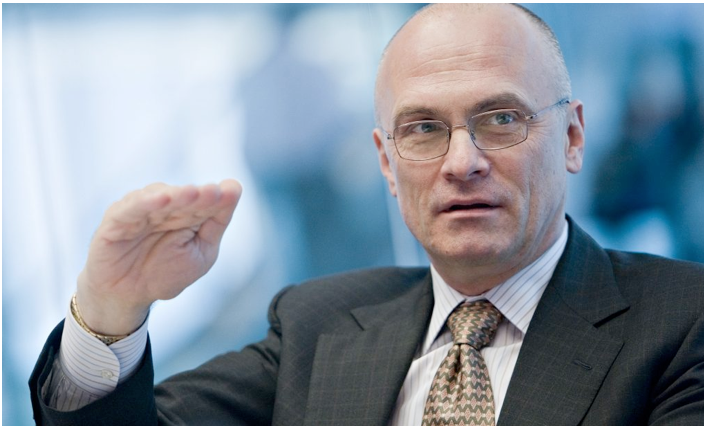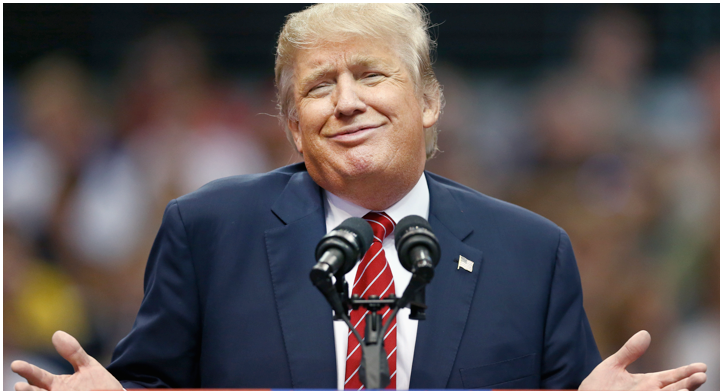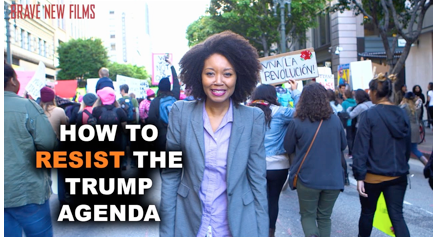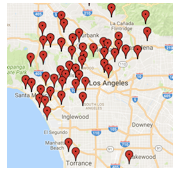President's Day Conundrum: Everything We Thought We Knew Is False ... Or Is It?
ALPERN AT LARGE-You know the drill -- new century, new millennium, new era, etc. We're supposed to be open-minded, but those claiming to be enlightened are often the most closed-minded. We have the "fake news", but many decrying the "fake news" are responsible for that "fake news”. To make matters worse, we're divided as a society, yet those decrying that division are too often the ones responsible for that division.
So how do we proceed? First off, we accept that things are complicated -- and trying to oversimplify things makes things inevitably worse. Second, we stop trying to create or promote pure heroes and pure villains -- they rarely exist, but by and large, they do not.
Example #1: Roe vs. Wade (yep, we're goin' there!)
Norma McCorvey, the "Jane Roe" of the Supreme Court case Roe v. Wade that legalized abortion, just died. Bulletin to all: she fought for the rights of women to have legalized abortion for much of her life...then converted to Christianity and devoted the rest of her life to protecting the lives of the unborn and undoing Roe v. Wade.
Was she pro-choice? Was she pro-life? Aren't the choices of women reduced when they have an unwanted child? Does the unborn child have any rights to live when they are aborted? What choices do women have when they have an unwanted pregnancy? What choices does a healthy fetus have in its second to third trimester when it could live in an incubator but his/her mother wants to abort?
Is a first trimester abortion the same as a third trimester abortion? Is a second trimester abortion of a just-diagnosed deformed child the same as that of a healthy child? What about the need to have birth control over-the-counter just as we have "Plan B"? Why aren’t all teenagers and all adult women aware of "Plan B"? And what is the responsibility of women versus that of men?
Is it still true that minority and even white babies won't be adopted if they're unwanted by their mothers? Or is that paradigm as "fake" as ever in our modern blended-family reality? And why aren't men educated to practice their own contraception and take their own responsibility when it comes to sex?
Lots of questions, but here's an answer: the rights and responsibilities of all parties must be promoted and weighed against each other...and those bandying around the "pro-life" and "pro-choice" monikers are the real problem. Stop dividing us -- most of us recognize the need to avoid oversimplifying this just to make political points.
Example #2: Immigration and Assimilation (yep, we're goin' there, too!)
The false canards, fake news, and conflation exist on this hot button issue as much as any. More Latinos (or Hispanics, if you prefer) are up in arms about our new President than about any other past president, yet more Latinos/Hispanics voted for Trump than for Mitt Romney four years ago.
Like the rest of us, Latinos/Hispanics are being made to choose. Of course, this unleashes (as with abortion) more questions than answers: Why are illegal immigrants being conflated and lumped in with legal immigrants? When did all immigrants get lumped together, and do they all consider each other as one united group (now that we just had a "day without immigrants")?
What makes an immigrant an "alien"? Is it the refusal of an immigrant to blend in and assimilate with the rest of American culture and the common language (English) with which we all communicate? Is it appropriate to distinguish between a "criminal alien" and an "illegal alien", and where should that delineation occur?
Why is it Spanish-speaking immigrants, and particularly Mexican immigrants (and almost never Asian or Filipino immigrants,) almost always insist on not speaking even broken English when in the company of those who don't speak their language...even if they are fairly fluent in English? Do they not know that those only speaking English are concerned about what is being said in Spanish?
Do immigrants, illegal or otherwise, recognize that when they choose not to even try to speak English they are also refusing to talk to Asian and Black and Latino Americans, as well as white Americans, who don't speak Spanish? It's clearly advantageous for native-born Americans to learn Spanish or Mandarin or Japanese, but why is the crisis so emphasized when it involves individuals who identify with Mexico as opposed to other Latin American or Asian nations?
Why do so many Mexican illegal immigrants identify with Mexico yet often prefer detention and the courts to deportation in order to stay in our country? What do we owe immigrants, and what do they owe us? And when did immigrants, both legal and illegal, lose the requirement to have sponsors for their health, education, and welfare? Yet another key question: is the strength of our nation that of "the melting pot" or our "diversity"?
One thing is for certain: the "great divide" over the rights and responsibilities of native-born and foreign-born residents of our nation is coming to a boiling point after our last two Presidents failed to achieve a unifying answer to our nation's immigration policies – and now that we have the election of Donald J. Trump as our 45th president.
Example #3: Speaking of President Donald J. Trump (aaaaand we're goin' there, to boot!)
It's President's Day and there are many who are perpetually enraged, appalled, bewildered, and gobsmacked that we have an iconoclastic, mega-tweeting billionaire president who led a populist rebellion meant to "stick it to both political parties.” After eight years of our nation's first black president overseeing a worsening in the lives and prosperity of black Americans, and with black children and young adults routinely killed in "liberal, Democratic" Chicago, we now have a man who has said openly misogynistic things yet has a strong segment of female Americans behind him.
Everything is upside-down -- for every female and minority American who opposes Trump, there are many who support him. And the oft-mentioned “unwillingness to accept” our first black president appears to be repeating itself in the unwillingness of many to accept Donald J. Trump as Barack H. Obama's successor.
Hollywood now appears to represent the elites, while billionaire Trump purportedly assumes the mantle of representing the common man (wasn't that Barack Obama's claim to fame, though?) The literary elites like Stephen King and J.K. Rowling appear apoplectic about Trump's election, while liberal Piers Morgan now feuds with J.K. Rowling. And for those who claim Trump is another Lord Voldemort, isn't is more like Mad-Eye Moody than Voldemort, based on his style and bluster, in contrast to what my literary role model Ms. Joanne K. Rowling has stated?
Meanwhile, alt-right figurehead Milo Yiannopoulos surprisingly finds much common ground with liberal iconoclast Bill Maher to the disparagement of so many. Is Yiannopoulos right when he says that tolerance and free speech are conservative principles, and not liberal principles like they once were? Based on his experience at Berkeley and other college campuses, it's worth a gander because Political Correctness is emerging as a new Groupthink of our era.
Finally, nowadays, what is "liberal" or "conservative” anyway? Isn't "liberal" supposed to be synonymous with "open-mindedness"? Are today's liberals truly open-minded or are they "old-fashioned" because they've been growing in power since the 1960's?
Is it among conservatives or liberals where open debate and tolerance of other points of view are most likely to occur? Will conservatism appeal to young Americans in ways we don't see in older citizens? After all, when liberal Democrat Dennis Kucinich supports President Trump's concerns about the over-empowered governmental bureaucracies of the "Deep State", then things are truly upside down.
Everything we once took for granted is false, or so it seems.
But on this President's Day Weekend, where we honor those who served our nation as its leaders, it is incumbent upon us all to ask ourselves: were things always this complicated…or is it only now that we're finally confronting just how complicated things have always been?
(Kenneth S. Alpern, M.D. is a dermatologist who has served in clinics in Los Angeles, Orange, and Riverside Counties. He is also a Westside Village Zone Director and Board member of the Mar Vista Community Council (MVCC), previously co-chaired its Planning and Outreach Committees, and currently is Co-Chair of its MVCC Transportation/Infrastructure Committee. He is co-chair of the CD11 Transportation Advisory Committee and chairs the nonprofit Transit Coalition, and can be reached at [email protected]. He also co-chairs the grassroots Friends of the Green Line at www.fogl.us. The views expressed in this article are solely those of Dr. Alpern.) Edited for CityWatch by Linda Abrams.











 So how do you join the movement? It's simple. Go to the Indivisible website and click on the button that says
So how do you join the movement? It's simple. Go to the Indivisible website and click on the button that says 


 If all five million Americans who protested that day got paid the federal minimum wage, and if people spent an average of five hours protesting, those patriotic rabble-rousers are owed a total of at least $181 million in unpaid protest wages.
If all five million Americans who protested that day got paid the federal minimum wage, and if people spent an average of five hours protesting, those patriotic rabble-rousers are owed a total of at least $181 million in unpaid protest wages. 





 Yes, well. The media quickly agreed they had, in fact, failed to cover it because it had, in fact, never happened. Turns out Conway was evidently
Yes, well. The media quickly agreed they had, in fact, failed to cover it because it had, in fact, never happened. Turns out Conway was evidently 
 A
A 
 The Ferrari California aligns with the state on the level of metaphor. California is famously the “Great Exception” among American states, as the 20th century author Carey McWilliams named it, and California is an exception among Ferraris. But the nature of that exceptionalism might surprise you; California is not the most expensive or the most glamorous or the fastest Ferrari.
The Ferrari California aligns with the state on the level of metaphor. California is famously the “Great Exception” among American states, as the 20th century author Carey McWilliams named it, and California is an exception among Ferraris. But the nature of that exceptionalism might surprise you; California is not the most expensive or the most glamorous or the fastest Ferrari. 













